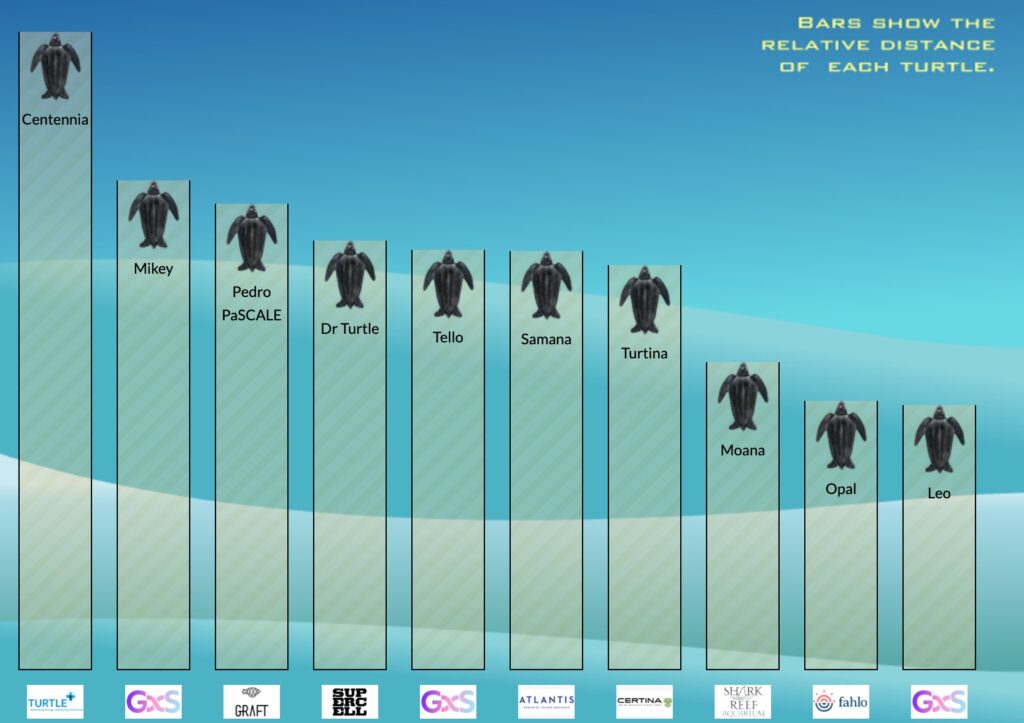In the shimmering depths of Panama’s waters, Samana emerges not just as another leatherback, but as a symbol of optimism. More than just a nesting leatherback, she carries the banner for Atlantis and the Atlantis Blue Project Foundation in the much-anticipated 2023 Tour de Turtles!
From Costa Rican Sands to Panamanian Shores: An Epic Voyage
Initially flipper tagged on Costa Rican beaches some years ago, Samana’s recent nesting on Soropta Beach in Panama was a serendipitous moment spotted by researchers at the Sea Turtle Conservancy this summer. This awesome leatherback, spanning 154.0 cm (60.6 in) in curved carapace length and 107.2 cm (42.4 in) in width, yielded 111 eggs. Fortunately, 81 of them were fertile (30 eggs were infertile – a normal occurrence for leatherbacks). Her migration since the onset of the Tour de Turtles on June 16 — World Sea Turtle Day — spans a staggering 3,287 km! To draw a vivid comparison, that’s over 36,000 football fields! Presently, Samana has secured the sixth position based on the relative distance, yet with over two months remaining in the race, the tides could still turn in her favor.
VIDEO: Samana laying her eggs in Soropta Beach in Panama.
The heart of Tour de Turtles goes beyond mere metrics. Each turtle’s journey, especially Samana’s, resonates with a deeper truth. It’s not about the miles covered but the larger mission at hand. The adage “saving sea turtles is a marathon, not a sprint” aptly encapsulates the tour’s enduring commitment to turtle preservation. Much like marathon runners, these turtles demonstrate resilience, persistence, and tenacity, reminding us that long-term conservation efforts are a continued commitment, not a fleeting endeavor.

Plastic’s Deadly Grip
This year our spotlight is on Samana, emblematic of the plastic crisis wreaking havoc in our oceans. Tragically, every stage of a leatherback turtle’s life is marred by the omnipresent threat of plastic pollution. Whether it’s a hatchling battling its way through discarded plastic on beaches or adults mistakenly ingesting plastic bags for jellyfish, the grim reaper of plastic looms large.
Two primary ways plastic endangers these creatures are ingestion and entanglement. The lethal “bubble butt” phenomenon, where gas released from decomposing plastic makes turtles float involuntarily, often results in starvation or making them easy prey. Moreover, seemingly innocuous items like six-pack plastic rings or fishing lines can prove fatal by causing entanglement.
Championing the Cause
Both Atlantis Paradise Island and the Atlantis Blue Project Foundation have steadfastly championed the Sea Turtle Conservancy’s Tour de Turtles for more than ten years. Through innovative satellite telemetry, this enthralling marathon decodes the mysteries of sea turtle migrations. As each turtle embarks on its remarkable journey, it sheds light on larger concerns threatening their existence, from climate adversities and marine traffic hazards to the menace of light pollution and unchecked egg poaching.
Turtle Triumphs: Taking Action
With 62 days left in the 2023 Tour de Turtles, the call to action is loud and clear. For sea turtles to triumph against the odds, everyday contributions matter. Whether it’s refusing plastic bags, supporting bans on plastic items, or simply picking up plastic on the beach on your day out, every effort counts.
Join hands in this marathon for survival. Explore Samana’s map here and engage with #TourdeTurtles on X. Remember, when we rally for Samana and her kin, we’re championing a healthier planet for all.
Written by: Lily Haines, MSc | PIMS | WhatsApp +1 (613) 791-6045 | lhaines@perryinstitute.org

